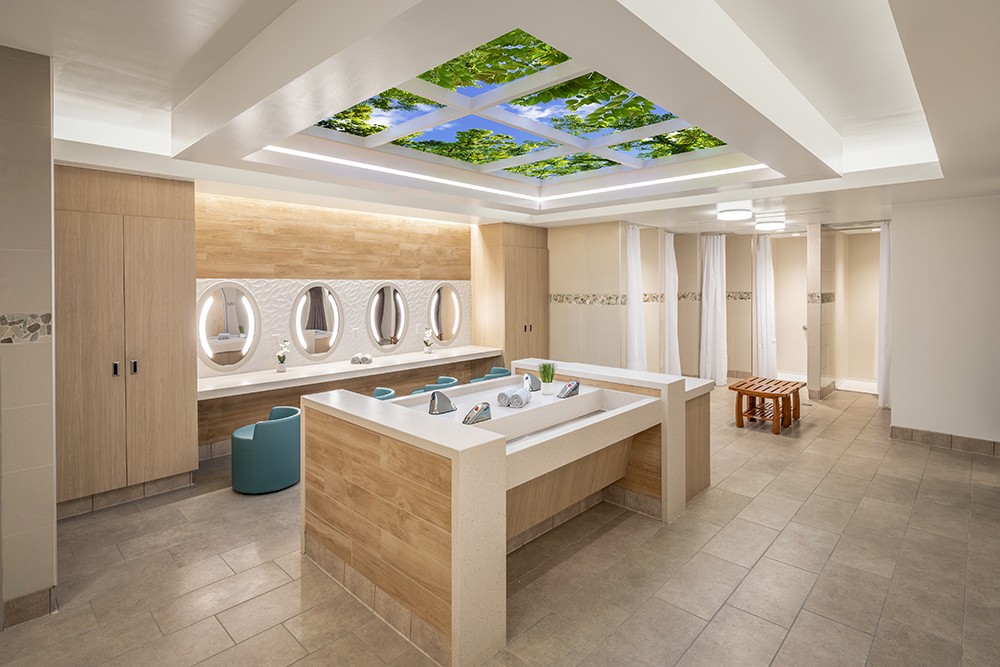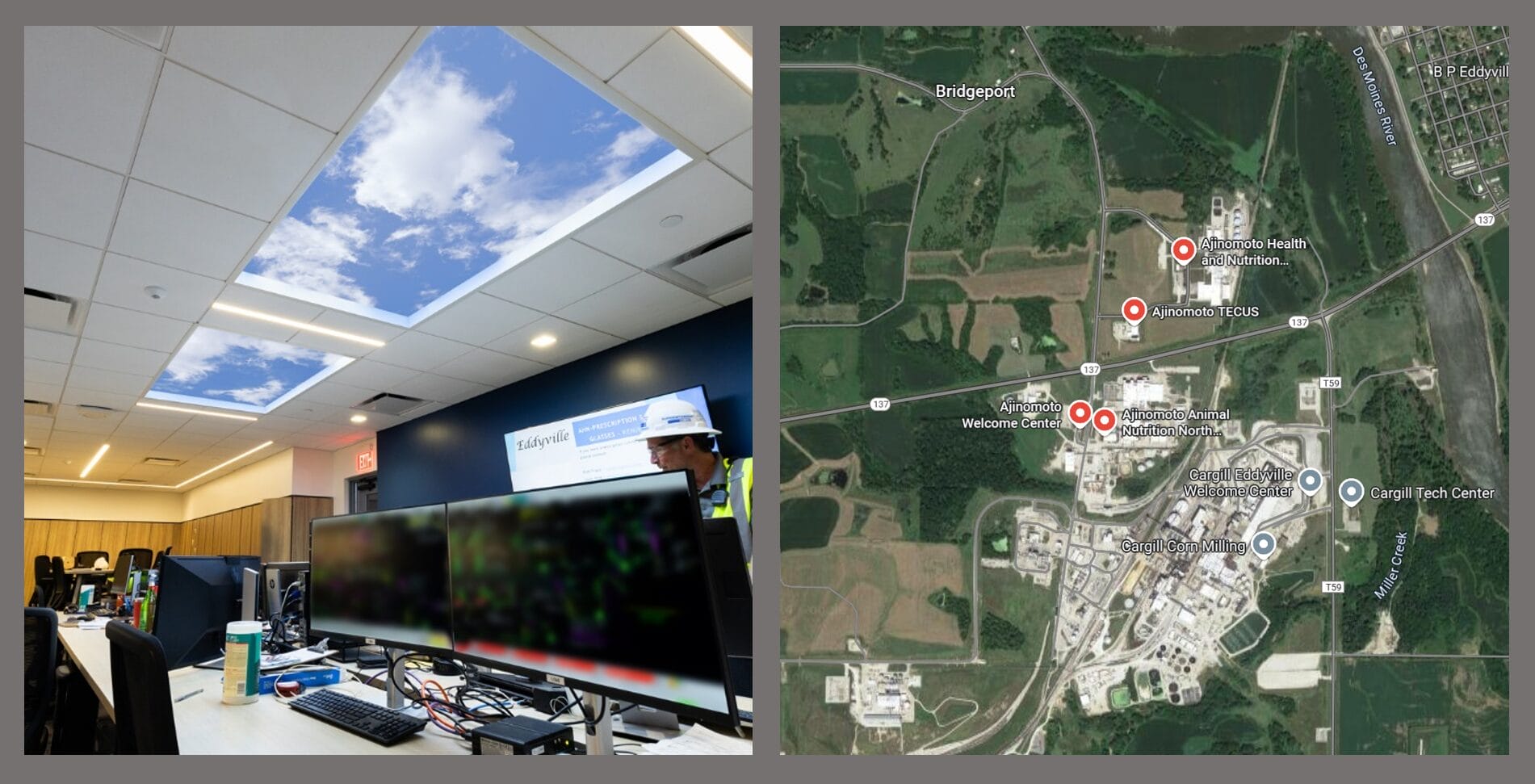When Boulder Associates completed a 25,600 sq. foot renovation of the Eating Recovery Center, a holistic psychiatric hospital in downtown Denver, they sought to create a secure, comfortable, and nurturing environment.
The design team chose Sky Factory’s eSea, a gallery quality Digital Cinema Virtual Aquarium, as the center piece for the visitor lounge. The wall-recessed aquarium is the only product of its kind with unedited, feature-length footage of underwater habitats. eSea’s silent, yet colorful sequences foster serenity and calm as prospective residents and their support team wait to meet the team that will help them on their journey to recovery.

Arrival at the center can be an emotional time for many patients and their families. More often than not, it signals the beginning of their journey into what will likely be lifelong recovery and acceptance of self. Given the delicate nature of the interactions that take place in this space, the designers sought to establish a peaceful and secure atmosphere that aids introspection. Featuring standard televised content has become less common in healthcare, and commercial waiting rooms because relaxing people is best accomplished by subtle sensory stimuli rather than overstimulation.
The designers also focused attention on the center’s community SPA bathroom, a space that is ideal for sensory treatments like biophilic engagement where a connection with nature helps residents progress in their journey from self-acceptance to self-regulation and then onto self-control and finally, self-healing.
According to Karen Moore, Occupational Therapist, consultant, and author of The Sensory Connection Program, sensory approaches add tools and strategies that support Trauma Informed Care and Restraint and Seclusion Reduction Initiatives. In her workshops and books, Moore notes that the atypical sensory experiences resulting from trauma cause abnormal sensory responses that cannot be addressed through traditional psychosocial models of treatment alone.
For people with eating disorders, the bathroom plays a decisive role in their behavior, which can also become a catalyst to break up past negative associations. For this reason, at the Eating Recovery Center the bathroom necessarily loses its ability to isolate a person and instead gives way to a communal space where peer support is encouraged.
For this idea to take hold in a non-threatening way, the bathroom was designed to evoke a comfortable SPA featuring pleasant materials and finishes. The soft, color palette visually reinforces relaxation, wellness, and self-acceptance, which are corporeal experiences associated with massage and wellness centers.

In order to mitigate the sometimes daunting road to recovery, designers also incorporated a 6’ X 10’ Revelation SkyCeiling that would capture the eye, soothe deeply seated emotions, and engage residents with a vivid perceived view of foliage, clouds, and open, blue sky.
Since the center’s opening, patients have shared their feelings about the installation on Instagram noting that the illusory sky is much appreciated in the community bathroom. It is particularly appreciated by new residents who are humbled by the fact that their recovery path requires that staff may need to chaperone their bathroom breaks.
Eating disorders rank among the top five most common mental disorders and anorexia nervosa, the obsessive fear of weight gain and a refusal to maintain a healthy body, has the highest mortality rate of any mental disorder.
Given the chronic nature and wide range of acute conditions for conditions like anorexia, bulimia, binge eating disorders, and similar pathologies, the environment of care plays a big role in establishing trust, empathy, and personal acceptance.



